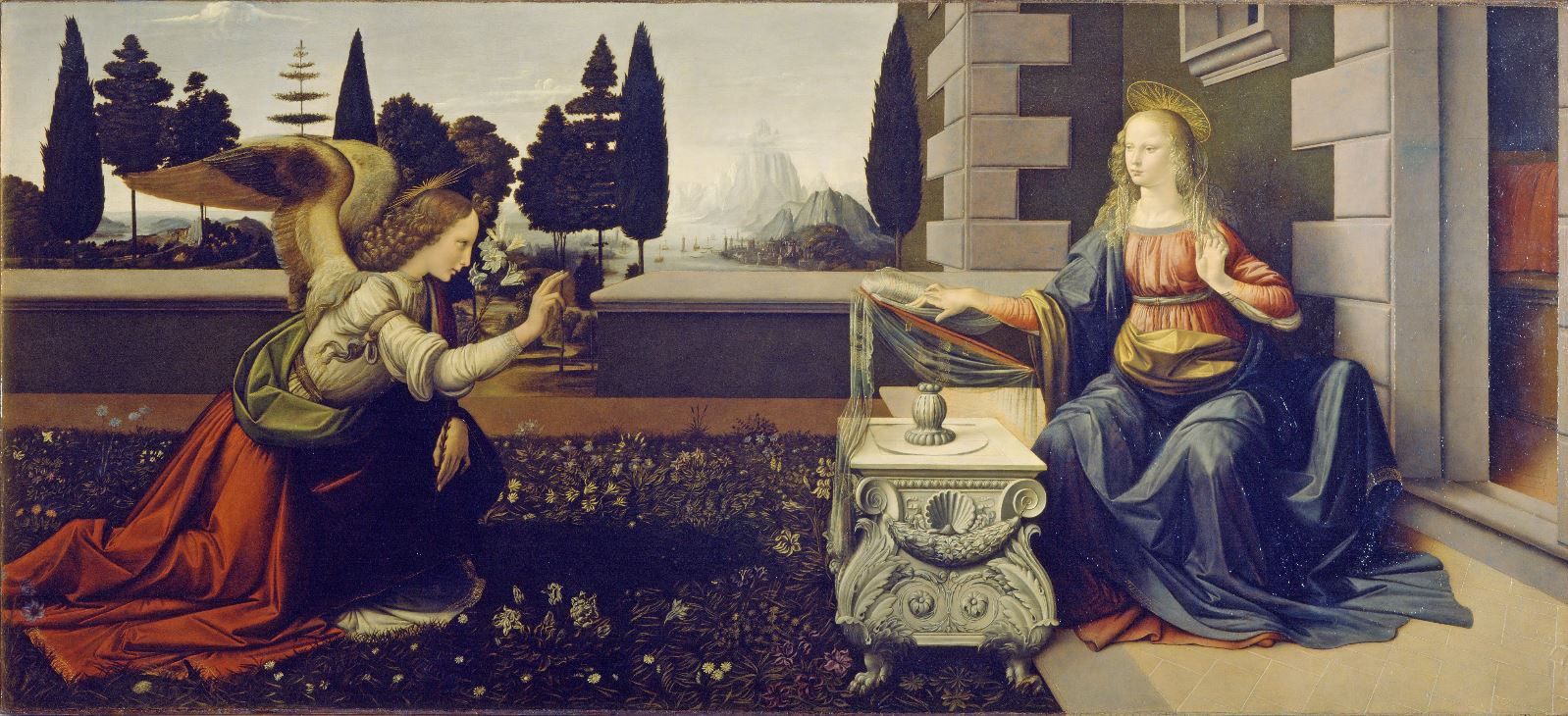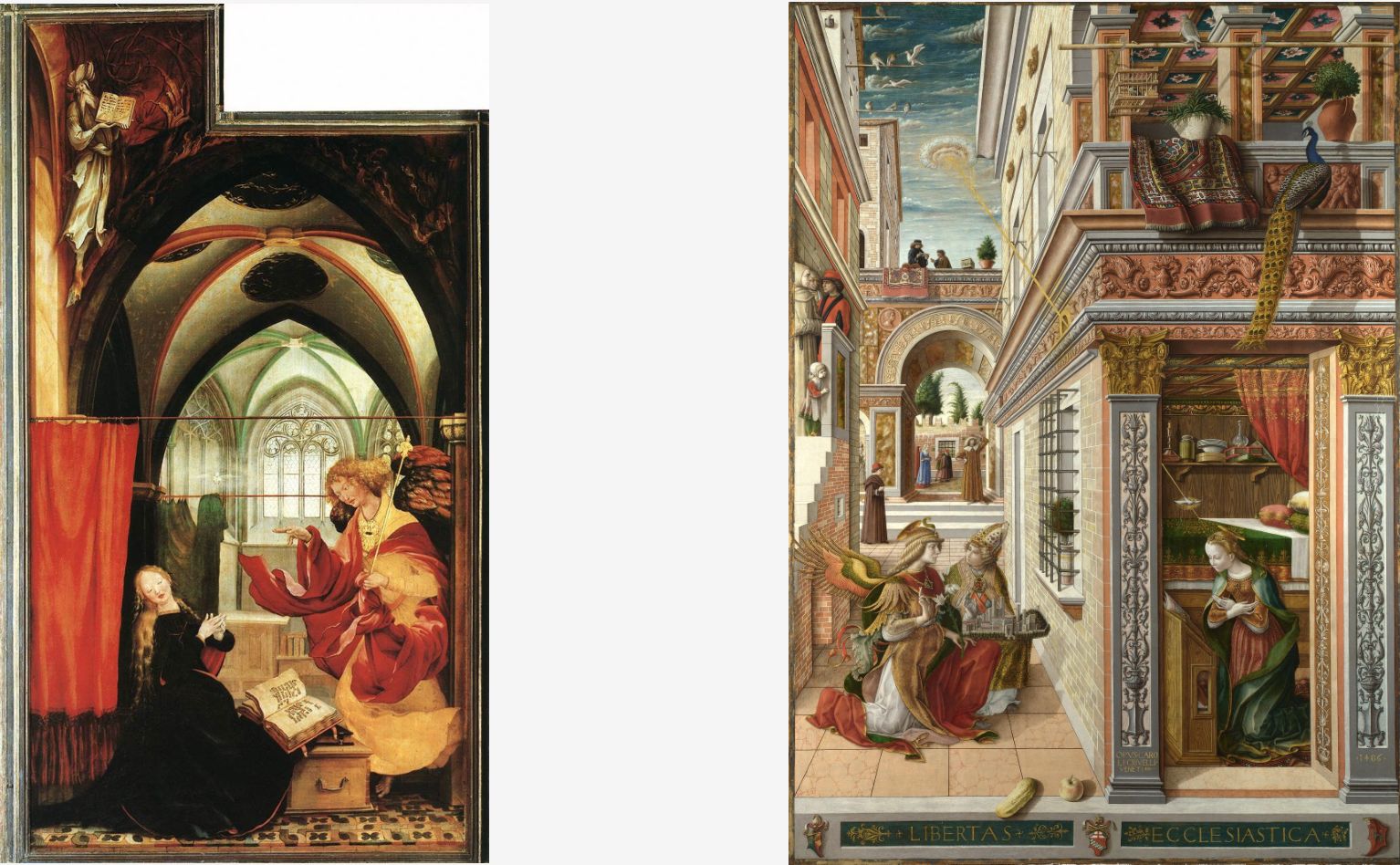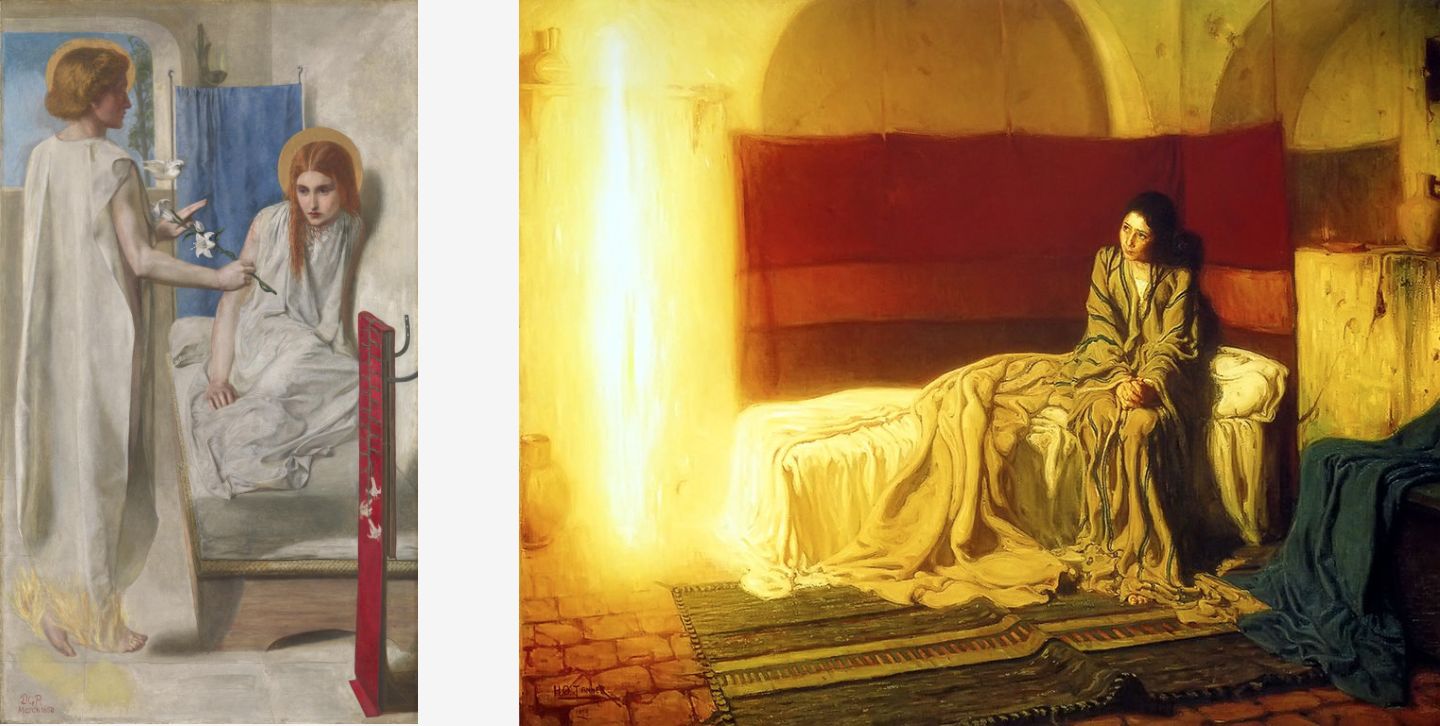Annunciation in Art: 25th of March
According to the Catholic Church, March 25 is the day on which the feast of the Annunciation is held. On this day the church commemorates the angel Gabriel appearing to the Virgin Mary to announce that she had been chosen to be the mother of Jesus Christ (Luke 1:26-38).
This date falls exactly nine months before Jesus’ birth at Christmas. The Annunciation to the Virgin is one of the most frequently repeated motifs in Christian art. Depictions of the Annunciation date back to early Christianity, for example on the oldest remaining fresco in the Priscilla catacombs in Rome, from the 4th century.
The subject was particularly popular during the Middle Ages and Renaissance, and can be found in the work of many old masters.
Leonardo Da Vinci, Annunciation (1472-1475)
Leonardo da Vinci’s Annunciation (1472-1475, fig. 1), for example, shows the Archangel Gabriel respectfully bowing in front of Mary. He blesses her with his right hand and holds a lily in his left hand, a symbol of Mary’s innocence.
In Matthias Grünewald’s Isenheim Altarpiece (1512-1516, fig. 2), we see a different interpretation: Mary is kneeling subserviently with folded hands before Archangel Gabriel, who rushes aggressively towards her. This action takes place within an ecclesiastical interior – a typical setting for French and German Annunciations of the fifteenth and sixteenth century.
L: Matthias Grünewald’s Isenheim Altarpiece, Annunciation (1512-1516) R: Carlo Crivelli, The Annunciation, with Saint Emidius (1486)
In Carlo Crivelli’s The Annunciation, with Saint Emidius (1486, fig. 3) a birdcage containing a single bird, hangs above the Virgin. This motif is repeated in a number of fifteenth-century Italian Annunciations, and probably symbolizes the incarnation of Christ in the Virgin’s womb.
However, it could also stand for the temporary imprisonment of the soul in the body. A strong castellated wall in the background of the painting surrounds the garden, referring to the hortus conclusus; the enclosed garden, a symbol of Mary as fertile and virginal at the same time. A beam of light that passes through a small aperture in the frieze of the monumental building illuminates Mary.
Furthermore, a tiny white dove, allegorizing the Holy Spirit, is visible nearby the Virgin’s head. The penetration of the heavenly light into an enclosed space, referring to Mary’s miraculous conception, is represented in many Renaissance paintings. The saint to the right of the winged angel Gabriel is, nevertheless, unconventional in Annunciation imagery.
As the announcement of Christ’s advent marks the beginning of the Christian era, Annunciation iconography may contain allusions to a transition from the Old Testament to the New. In Robert Campin’s Merode Altarpiece (ca. 1425-1430, fig. 4) this is suggested by a scroll and codex, visible on the table in front of a reading Mary.
The scroll is an ancient form of book, therefore referring to the Old Testament, while the codex is associated with the Christian era and could refer to the New Testament.
L: Dante Gabriel Rossetti’s Ecce Ancilla Domini! (Behold the Handmaid of the Lord, 1850) R: Henry Ossawa Tanner, The Annunciation (1898)
Modern depictions of Annunciation imagery are rare yet often very interesting, take for example Dante Gabriel Rossetti’s Ecce Ancilla Domini! (Behold the Handmaid of the Lord, 1850, fig. 5) In this unorthodox version we see a handsome, wingless Gabriel extending two lilies towards Mary who is sitting rather uneasily on her narrow bed.
Even more unconventional is Henry Ossawa Tanner’s painting The Annunciation (1898, fig. 6). Here, Tanner shows an adolescent Mary dressed in rumpled Middle Eastern peasant clothing and without a halo, while Gabriel cannot even be identified as human anymore, appearing only as a large column of light.
Interested in more art about annunciation? Please have look here at Gallerease!




